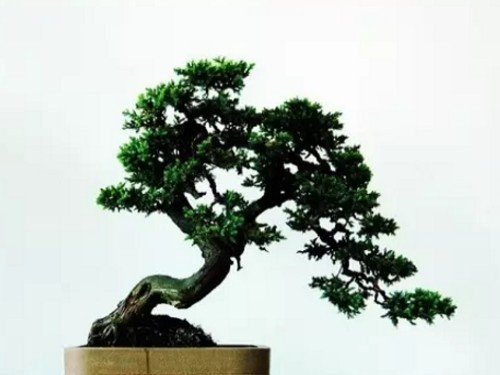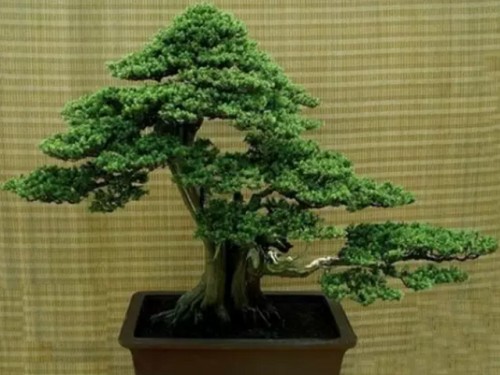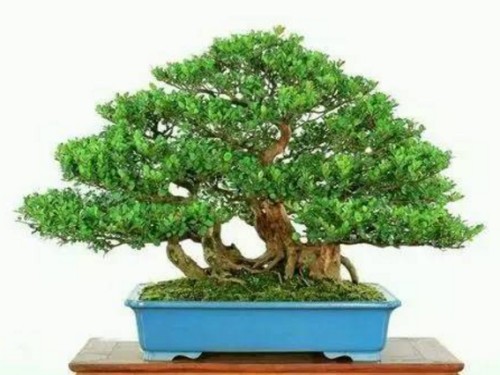Maintenance method of Sabina vulgaris bonsai
Ground cypress, also known as cypress, climbing cypress. Belongs to the cypress family, the genus Sabina. Evergrape shrubs. Because of its twisted dry diameter, fine branches and strong adaptability. Easy to shape and other features are loved by the majority of bonsai lovers. The branches and leaves of the cypress are green and serpentine, suitable for viewing in the four seasons. The ornamental effect is the best when the tender green new branches and leaves are produced in spring. It is not suitable to keep indoors for a long time during the growing period. The paving cypress is easy to shape and can be made into a symmetrical bonsai, which can be placed in the courtyard or reception room for appreciation.

[site]
After the ground cypress is on the fine basin, there is less soil in the basin, and some roots are close to the basin wall, which is easy to damage the roots after the sun exposure, which is disadvantageous to plant growth. Therefore, in the hot summer, the ground cypress bonsai in the fine basin should be placed under the shade with certain light, maintain a certain humidity, sprinkle water to the ground when the climate is dry, increase the humidity of the microclimate, and have good ventilation conditions. Open-air maintenance can be placed in spring and autumn. Potted plants in the north, late autumn or early winter should be moved into the indoor winter in time.
[watering]
The cypress likes the humid environment, but is afraid of waterlogging. In summer, water should be often watered to keep the basin soil moist. When the weather is hot, water should be sprayed to the leaves in the morning and evening. You should water less in winter. Cypress like to be moist, potted plants should be often watered, but should not be watered. When the weather is dry, you should often spray water on the leaves.
[fertilization]
The ground cypress bonsai in the upper basin should be cooked with thin liquid fertilizer. In its growing season, liquid fertilizer can be applied every 20 days or so. Do not fertilize too much, or it will make the branches grow and affect the shape of the tree. Thin and rotten organic fertilizer should be used, and light fertilizer and water should be applied 2-3 times each year between March and May in spring and from September to October in autumn.
[pruning]
In the pruning of cypress, the side branches that do not need to be developed will be shortened in time before the new branches are produced in spring, so as to promote the extension of the main branches. The branches that affect the shape of the tree can also be cut off during the dormant period.
[plastic surgery]
Ground cypress in the maintenance process, sometimes grow too long branches. If the tree is damaged, it should be cut off in time. In order to make the branches and leaves short and dense, it is necessary to properly pick the heart to facilitate the growth of lateral branches.
[turn the basin]
It is appropriate to turn the basin every 3-4 years, preferably before the emergence of early spring. When turning the basin, part of the old roots and old soil can be properly removed and replaced with fertile and loose culture soil to promote the growth and development of new roots, strong branches and leaves, and increase the ornamental effect of bonsai.
[diseases and insect pests]
Sabina vulgaris bonsai diseases and insect pests are less, so rust and red spiders should be controlled.
The cypress likes to be wet, but there can be no stagnant water in the basin. In addition to watering the basin, it is also necessary to sprinkle water to the maintenance site appropriately, and less water should be watered in winter. The bonsai of Sabina vulgaris which has been formed should not use too much fertilizer, but should be applied once a month in the growing season. When the spring and autumn sun is not too strong, put the cypress bonsai under the sun for maintenance. When the summer weather is hot and hot, the cypress bonsai should be placed in a semi-shaded place or in a shade shed. The winter room temperature is about 5 ℃ to survive the winter safely.
Time: 2019-06-01 Click:
- Prev

How to raise juniper bonsai-- maintenance method
Juniper is not only a species of cypress, but also a common landscape tree species, which is loved by many garden artists and is suitable for various styles of garden landscape. In addition, juniper can also be used for potted culture and bonsai art, which has a very good ornamental effect.
- Next

Key points of bonsai conservation
As a kind of bonsai tree species, people are most concerned about the management and excellent potting ability after potted plants. There are more than 20 species of alpinia paniculata. The classification is mainly based on the difference of leaf shape, leaf color and leaf arrangement. The growth and habits of red Phoebe with different leaf types and leaf colors are different. For example
Related
- Fuxing push coffee new agricultural production and marketing class: lack of small-scale processing plants
- Jujube rice field leisure farm deep ploughing Yilan for five years to create a space for organic food and play
- Nongyu Farm-A trial of organic papaya for brave women with advanced technology
- Four points for attention in the prevention and control of diseases and insect pests of edible fungi
- How to add nutrient solution to Edible Fungi
- Is there any good way to control edible fungus mites?
- Open Inoculation Technology of Edible Fungi
- Is there any clever way to use fertilizer for edible fungus in winter?
- What agents are used to kill the pathogens of edible fungi in the mushroom shed?
- Rapid drying of Edible Fungi

